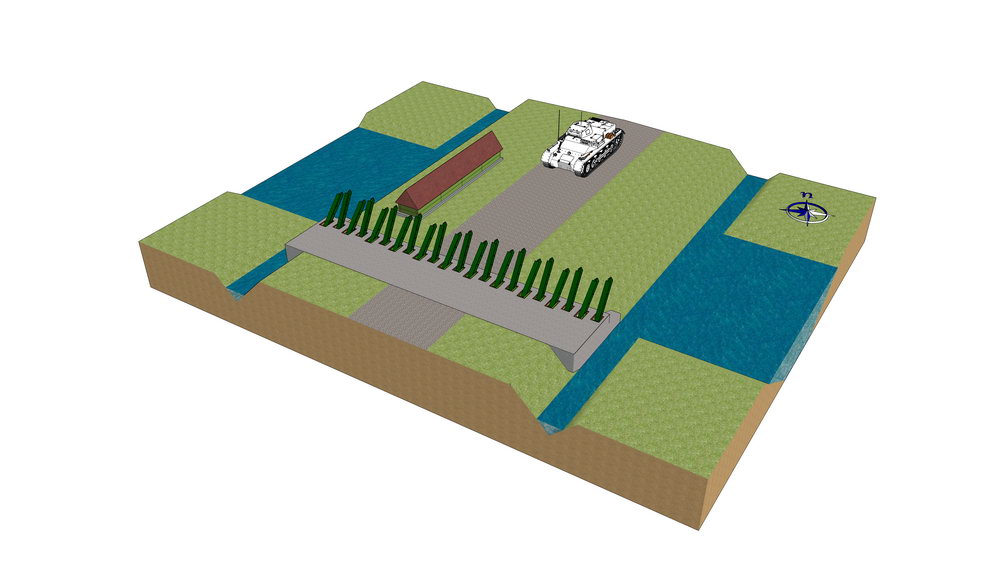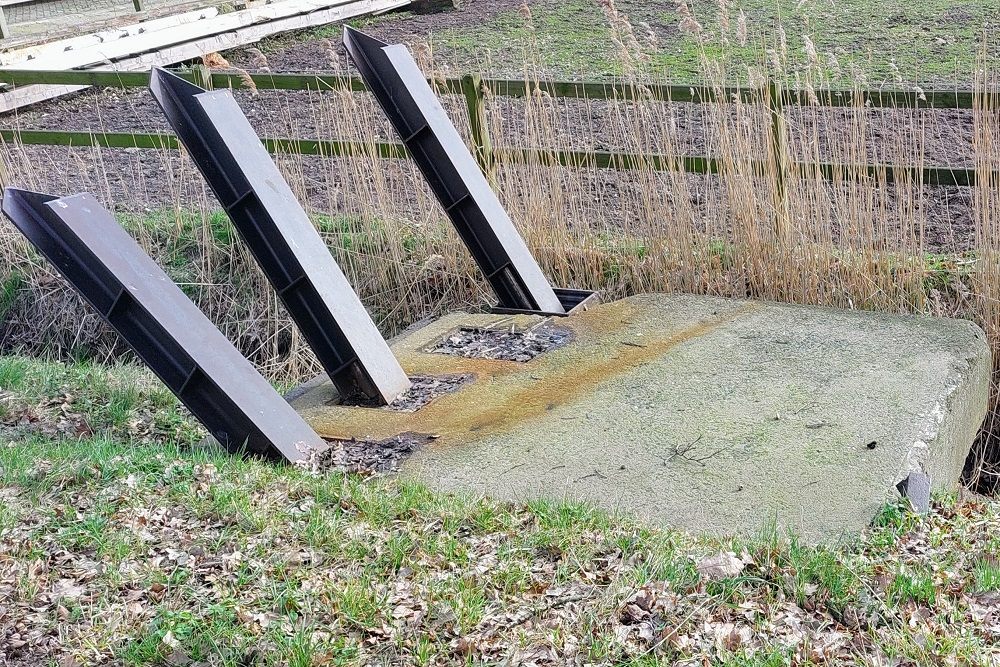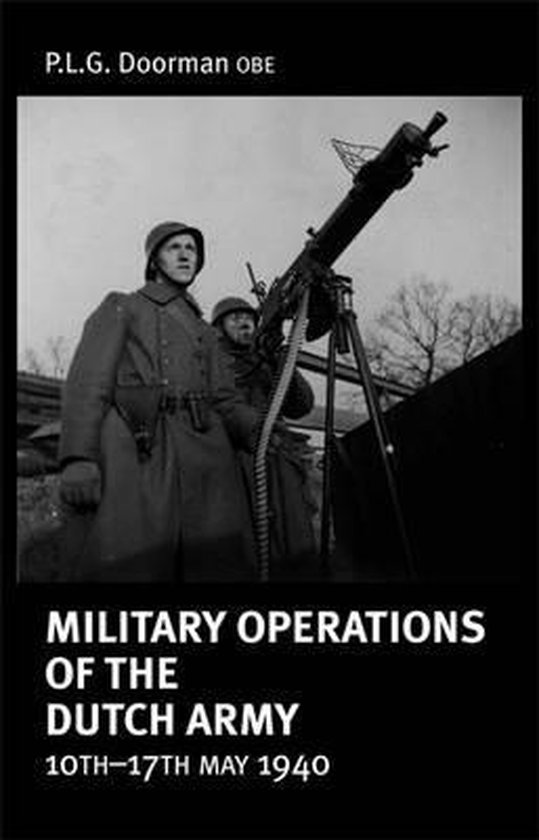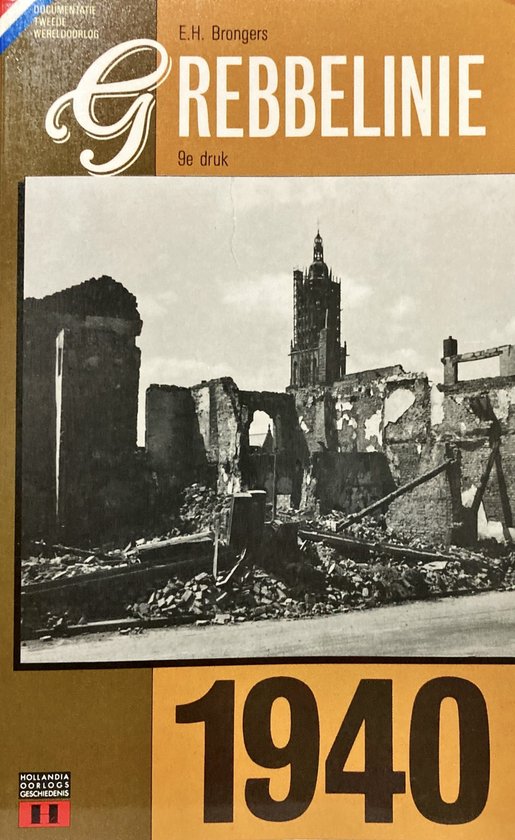Anti-tank Barrier Renswoude
This anti-tank barrier was to prevent (German) armored cars and tanks from passing the inundations over the high Schalmdijk.
The barrier was part of a series of measures that were taken in the Grebbe-line near Renswoude to close the roads to the west. Because it remained uncertain for a long time whether the area on both sides of the road could be flooded, the Dutch army had tank ditches dug that formed an almost continuous obstacle to vehicles.
The main roads and dikes were provided with reinforced concrete blocks over the full width of the road. Recesses (tubes) were made in it, in which steel H-beams could fit. These so-called "asparagus" could be stored in the nearby storage boxes during the mobilization period. The holes were covered, so that peace-time traffic could pass unhindered.
May 1940
Shortly after the outbreak of the war, the beams were placed in the barrier in about 15 minutes. They were secured by cutting steel cables, after which barbs unfolded in the tubes.
From May 12, the German infantry showed up in the area. Dutch patrols of the 22nd Infantry Regiment passed the barrier, as did retreating soldiers. A day later grenades struck at De Schalm, where private Henk Buurman was killed. His body was temporarily buried in a field. In the immediate vicinity, the defenders resisted until late in the night, to offer the field army the opportunity to return to the New Dutch Waterline.
The grave monument for private Buurman is now on the Field of Honor on the Grebbeberg.
Do you have more information about this location? Inform us!
Source
- Text: Leo van Midden
- Photos: Leo van Midden (1, 2, 3, 4), Peter Schipper (5)
Related books
Nearby
Museum
- Museum Grebbelinie in het Vizier - Woudenberg
- Visitor Center And Museum Dutch War Cemetery Grebbeberg - Rhenen
Point of interest
- Grebbe Line Visitor Centre - Renswoude
- Information Sign Hoofdstraat 106 Veenendaal - Veenendaal
- Information Sign Tuinstraat 133 Veenendaal - Veenendaal
Monument
- Monument Halifax W7930 - Renswoude
- Liberation memorial De Klomp - De Klomp
- Memorial Harold Frederick Wakeman - De Klomp
Cemetery
- Graves Belgian Refugees Veenendaal - Veenendaal
- Dutch War Graves Veenendaal - Veenendaal
- Commonwealth War Grave General Cemetery Veenendaal - Veenendaal
Remembrance Stone
- Stumbling Stones Prins Bernhardlaan 178 - Veenendaal
- Stumbling Stone Julianastraat 11 - Veenendaal
- Stumbling Stone Hoofdstraat 100 - Veenendaal
Fortification
- Grebbe Line - S3 Casemate GL135 - Renswoude
- Grebbe Line - B Casemate GL139 - Renswoude
- Pantherstellung - Bunker R001-P - Renswoude











